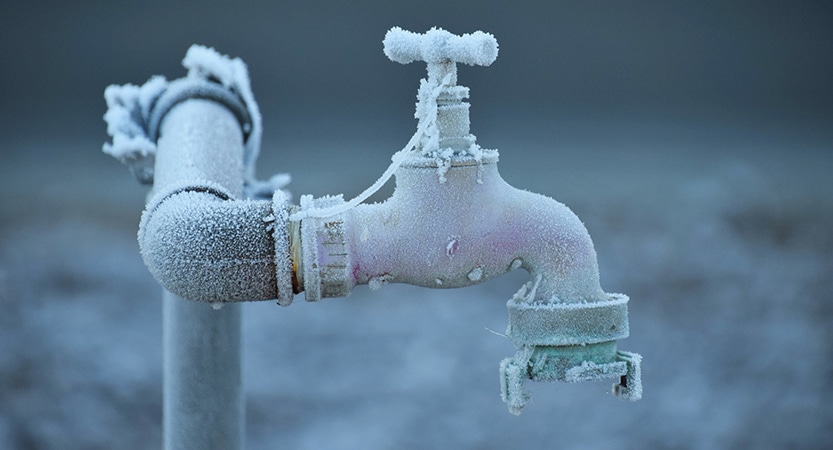They are making a number of great pointers on the subject of Helpful Tips to Prevent Frozen Pipes this Winter overall in this post further down.

Cold weather can wreak havoc on your plumbing, particularly by freezing pipelines. Here's just how to prevent it from happening and what to do if it does.
Intro
As temperatures drop, the danger of frozen pipelines increases, potentially causing costly repair work and water damage. Comprehending just how to avoid icy pipes is crucial for house owners in cool environments.
Understanding Icy Pipelines
What causes pipes to freeze?
Pipes freeze when revealed to temperatures below 32 ° F (0 ° C) for expanded durations. As water inside the pipelines freezes, it increases, taxing the pipe walls and possibly triggering them to burst.
Threats and damages
Icy pipes can lead to water disruptions, home damages, and costly repairs. Ruptured pipelines can flood homes and trigger considerable structural damage.
Indicators of Frozen Water Lines
Recognizing icy pipelines early can stop them from breaking.
Just how to determine icy pipes
Try to find lowered water flow from taps, uncommon odors or sounds from pipes, and noticeable frost on revealed pipelines.
Avoidance Tips
Insulating susceptible pipes
Wrap pipes in insulation sleeves or use warm tape to shield them from freezing temperature levels. Concentrate on pipelines in unheated or outside areas of the home.
Heating methods
Keep indoor areas appropriately warmed, particularly areas with pipes. Open cabinet doors to permit cozy air to circulate around pipelines under sinks.
Safeguarding Exterior Plumbing
Yard pipes and outdoor faucets
Disconnect and drain pipes yard pipes prior to winter season. Install frost-proof spigots or cover outside taps with shielded caps.
What to Do If Your Pipes Freeze
Immediate actions to take
If you believe frozen pipes, maintain faucets available to alleviate stress as the ice thaws. Use a hairdryer or towels taken in warm water to thaw pipelines slowly.
Long-Term Solutions
Structural modifications
Take into consideration rerouting pipelines far from outside wall surfaces or unheated locations. Include added insulation to attic rooms, cellars, and crawl spaces.
Updating insulation
Purchase top notch insulation for pipes, attics, and wall surfaces. Correct insulation assists preserve consistent temperatures and decreases the threat of frozen pipes.
Verdict
Protecting against frozen pipelines needs proactive actions and quick feedbacks. By comprehending the reasons, indicators, and preventive measures, home owners can secure their pipes during winter.
5 Ways to Prevent Frozen Pipes
Drain Outdoor Faucets and Disconnect Hoses
First, close the shut-off valve that controls the flow of water in the pipe to your outdoor faucet. Then, head outside to disconnect and drain your hose and open the outdoor faucet to allow the water to completely drain out of the line. Turn off the faucet when done. Finally, head back to the shut-off valve and drain the remaining water inside the pipe into a bucket or container. Additionally, if you have a home irrigation system, you should consider hiring an expert to clear the system of water each year.
Insulate Pipes
One of the best and most cost-effective methods for preventing frozen water pipes is to wrap your pipes with insulation. This is especially important for areas in your home that aren’t exposed to heat, such as an attic. We suggest using foam sleeves, which can typically be found at your local hardware store.
Keep Heat Running at 65
Your pipes are located inside your walls, and the temperature there is much colder than the rest of the house. To prevent your pipes from freezing, The Insurance Information Institute suggests that you keep your home heated to at least 65 degrees, even when traveling. You may want to invest in smart devices that can keep an eye on the temperature in your home while you’re away.
Leave Water Dripping
Moving water — even a small trickle — can prevent ice from forming inside your pipes. When freezing temps are imminent, start a drip of water from all faucets that serve exposed pipes. Leaving a few faucets running will also help relieve pressure inside the pipes and help prevent a rupture if the water inside freezes.
Open Cupboard Doors
Warm your kitchen and bathroom pipes by opening cupboards and vanities. You should also leave your interior doors ajar to help warm air circulate evenly throughout your home.

I'm certainly very fascinated with How to Prevent Your Pipes From Freezing and I am praying you enjoyed my article. Do you know about somebody who is serious about the subject? Why not share it. Thank you for being here. Kindly stop by our site back soon.
Get An Estimate